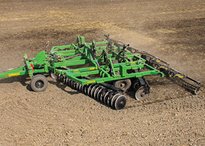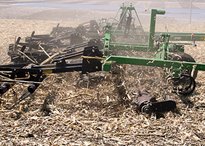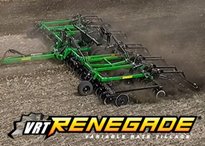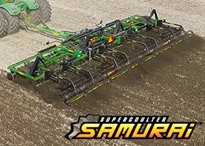Timing Your Spring Tillage
It’s that time of year when many producers think about spring tillage. Where you live will largely have an impact on the type of tillage you do. Those in warmer climates may simply be leveling the seedbed for planting or controlling weeds. In northern climates, on the other hand, farmers often have colder soils and undecomposed residue to deal with. No matter your situation, here are some tips for ensuring conditions are ready for spring tillage operations.
Wait for the Right Conditions, If Possible Many farmers get overly anxious to start working their fields as soon as the weather turns warmer. Sometimes, however, they may be better off waiting a couple days, if possible, for field conditions to improve. This is especially true if the soil is too wet. Driving on wet ground could lead to excessive compaction, and traditional tillage tools may cause soil smearing. These effects could inhibit root growth and lead to lower yields, even before you’ve planted the crop.
Many farmers get overly anxious to start working their fields as soon as the weather turns warmer. Sometimes, however, they may be better off waiting a couple days, if possible, for field conditions to improve. This is especially true if the soil is too wet. Driving on wet ground could lead to excessive compaction, and traditional tillage tools may cause soil smearing. These effects could inhibit root growth and lead to lower yields, even before you’ve planted the crop.
How wet is too wet for tillage? Extension engineers at University of Nebraska-Lincoln have recommended taking a handful of soil from tillage depth and pressing it in your hands to make a mud ball. If wet soil sticks to your hand, conditions are not ideal. UNL Extension then advises to drop the mud ball to the ground from waist high. If the mud ball doesn’t break apart when it hits the surface, producers may want to wait for drier conditions.
Agronomists at Purdue Extension have offered another method. They recommend making sure that the soil will break apart at 1 inch below the depth of tillage. Producers can also take a clump of soil from the depth of tillage and roll it between their hands. If the soil forms a “worm” that is 5 inches long with a diameter of three-eighths of an inch or less, then producers may want to consider letting the field dry out before doing tillage.
Additionally, Purdue Extension proposes that producers wait to do spring tillage until a field is within 24 hours of the intended planting time. While this advice may not be feasible for all farmers, the agronomists state that this practice may help reduce the risk of erosion, gullies and soil crusting.
Of course, soil types vary greatly from one region to another, so recommendations that work well for one farmer may not work as well for another. Because of this, it’s important to stay up-to-date on the latest information from your local extension and also take into account results from past experiences.
Tillage in Wet Soil
For some producers, especially those in the northern corn belt and Canada, waiting is easier said than done, as there may be a very small window of opportunity for spring tillage. And if they simply wait for the ground to dry naturally, they may never get the crop in. In these instances, tillage is often necessary for warming up the seedbed and drying the upper soil profile to create better planting conditions. If you fall into this category, don’t worry. You can use true vertical tillage tools to operate efficiently on wet ground while minimizing negative effects on the soil.
Here's how it works:

On true vertical tillage tools, the coulter blades are mounted at a zero-degree angle. (We say “true vertical tillage” because some products that are marketed as vertical tillage actually have angled coulters or concave disks.) Because of their design, true vertical tillage tools don’t move soil horizontally and, therefore, don’t cause the soil smearing and hardpan that are often created by more traditional tillage tools. As a result, this type of equipment is ideal for wet conditions.
When running a true vertical tillage tool, the blades slice through surface residue and score the soil surface, exposing it to the sun and air. This dries the soil out much faster to help farmers plant their fields sooner. Warming the soil this way also promotes quicker crop emergence, which is key in colder climates.
For operation on wet ground, University of Minnesota Extension recommends keeping tillage shallow. Their experts have suggested running vertical tillage equipment no more than 3 inches deep to minimize inversion of the soil. They also propose using the lightest tractor possible to get the job done in order to help prevent compaction. Thankfully, the design of vertical tillage tools allows them to be pulled easily, requiring less horsepower than conventional disks.
Another factor to consider is that lifting wet soil can create clods. Rolling baskets generally do a great job at breaking up these clods, but conventional baskets have a tendency to fill up with mud, and unplugging them is a very time-consuming process. Because of this, producers may want to consider using rolling baskets with internal mud scrapers to help deal with wet conditions without ever plugging up with mud.
Sources: University of Nebraska-Lincoln Extension — “Wait for Better Conditions Before Heading Out on Wet Soils.” | Purdue Extension — “Purdue Agronomist: Don’t Fall for the Three Tillage Temptations” | University of Minnesota Extension — “Fall Tillage Management in Wet Soil Conditions”




























 Hats, Diecast Models, Gloves and More!
Hats, Diecast Models, Gloves and More!
 Library
Library